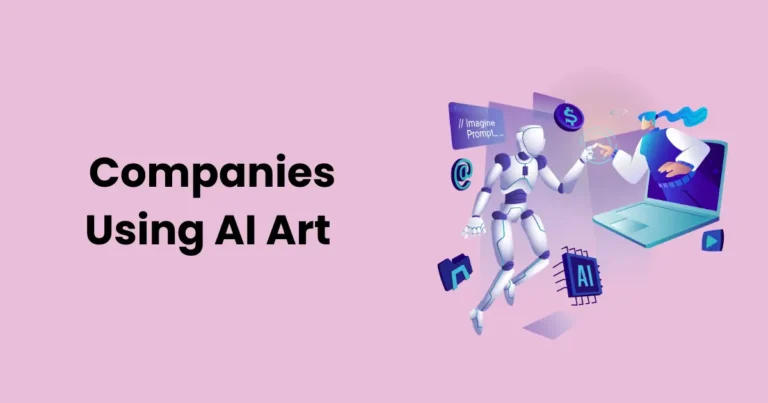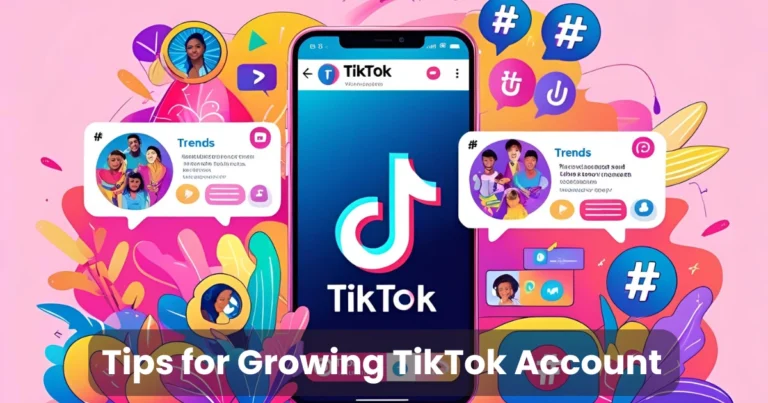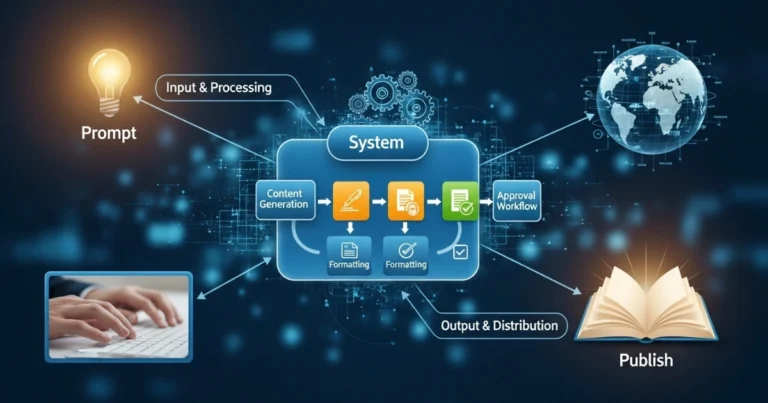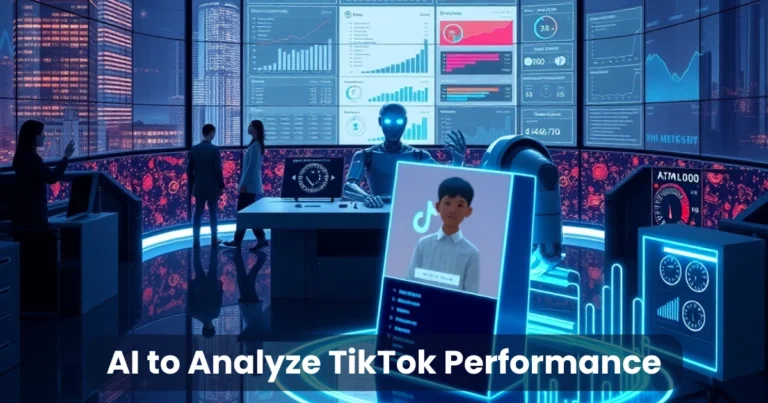AI-Driven Image-to-Video Transformation
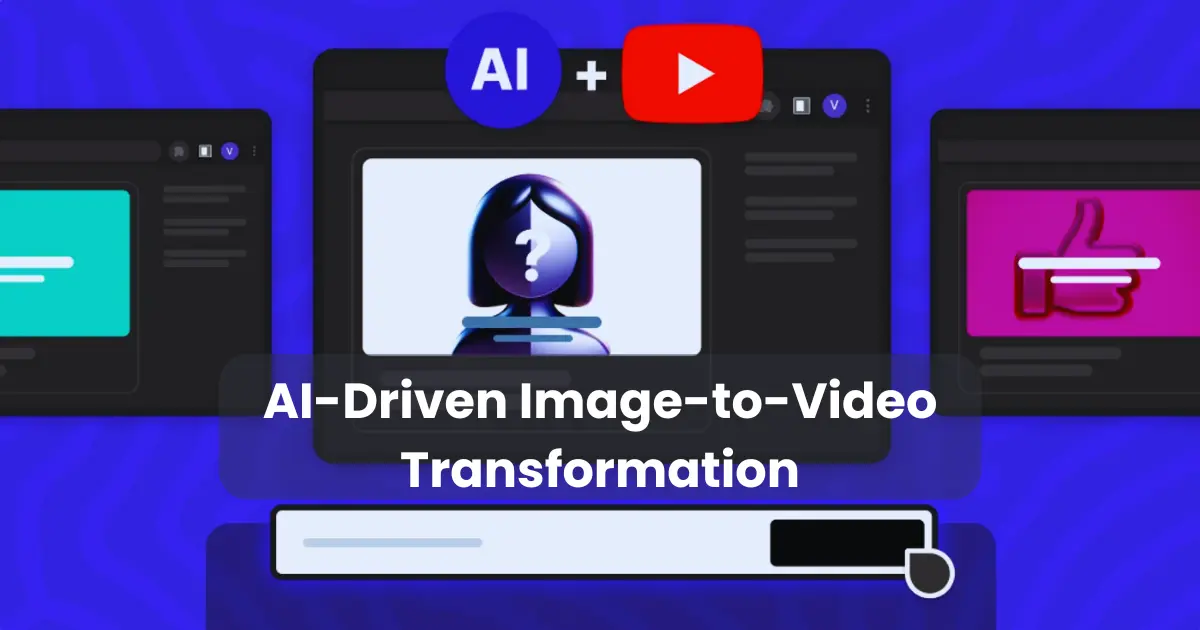
Contents
- 1 What Is AI-driven Image-to-Video Transformation?
- 2 How Does AI Transform Images Into Videos?
- 3 Benefits of AI-driven Image-to-Video Transformation
- 4 Applications of AI-driven Image-to-Video Transformation
- 5 Best AI Tools for Image-to-Video Transformation
- 6 Future of AI-driven Image-to-Video Transformation
- 6.1 1. Improved Realism and Motion Accuracy
- 6.2 2. Real-Time Image-to-Video Conversion
- 6.3 3. AI-Powered Interactive Content
- 6.4 4. Expansion in the Gaming and Metaverse Industry
- 6.5 5. Ethical AI and Deepfake Regulations
- 6.6 6. AI and Creativity: A New Era of Content Creation
- 6.7 7. Seamless Integration with AR and VR
- 6.8 Conclusion
AI-driven image-to-video transformation is revolutionizing the way static visuals come to life. With advanced artificial intelligence, a single image can be transformed into a dynamic video, enhancing storytelling, creativity, and engagement. This technology leverages deep learning algorithms and machine learning models to predict motion, generate frames, and create realistic animations. As a result, businesses, content creators, and filmmakers can produce high-quality videos without extensive manual effort.
With the rapid advancement of AI, this transformation process is becoming more sophisticated, allowing for higher accuracy, improved motion synthesis, and greater realism. Whether for marketing, entertainment, or social media content, AI-driven image-to-video transformation is reshaping the digital landscape. In this article, we will explore how this technology works, its benefits, real-world applications, and the best tools available for generating AI-powered videos.
What Is AI-driven Image-to-Video Transformation?
AI-driven image-to-video transformation is the process of converting a static image into a dynamic video using artificial intelligence. This advanced technology utilizes deep learning, computer vision, and motion prediction models to generate realistic motion from a single frame. By analyzing textures, lighting, and contextual elements, AI enhances an image with seamless animation, creating fluid and visually compelling videos.
Traditional video creation requires multiple frames captured over time, but AI automates this process by predicting and generating intermediate frames. With the help of neural networks, such as Generative Adversarial Networks (GANs) and Recurrent Neural Networks (RNNs), AI can synthesize motion, facial expressions, and scene transitions with impressive accuracy.
This innovation is widely used across industries, from filmmaking and marketing to social media content creation. AI-driven image-to-video transformation enables users to bring static images to life, making content more engaging and immersive. Whether it’s animating historical photos, generating talking avatars, or enhancing digital storytelling, this technology is reshaping how visuals are produced and consumed.
How Does AI Transform Images Into Videos?
AI-driven image-to-video transformation relies on deep learning, computer vision, and motion prediction algorithms to animate static images. By analyzing an image’s structure, AI generates intermediate frames, creating a smooth and realistic motion effect. The process involves several key steps, powered by advanced neural networks.

1. Machine Learning Models Behind the Process
AI uses sophisticated machine learning models to understand and predict motion in images. The most common models include:
- Generative Adversarial Networks (GANs): GANs consist of two competing networks—the generator and the discriminator. The generator creates synthetic frames, while the discriminator evaluates their realism, refining the results for more natural animations.
- Recurrent Neural Networks (RNNs): These models process sequential data, helping AI predict movement over time by analyzing previous patterns.
- Convolutional Neural Networks (CNNs): CNNs detect image features such as edges, textures, and lighting, ensuring accurate frame generation.
2. Role of Deep Learning in Video Synthesis
Deep learning plays a crucial role in AI-driven image-to-video transformation by enhancing motion realism and ensuring smooth transitions. Key techniques include:
- Optical Flow Estimation: AI analyzes pixel movement to predict realistic motion paths between frames.
- Pose Estimation: By identifying key points in an image (e.g., facial features or body joints), AI animates subjects with natural motion.
- Facial Reenactment: This technique maps one person’s facial expressions onto a static image, enabling talking avatars and expressive animations.
3. AI-driven Frame Interpolation
AI generates missing frames between two static points, ensuring a fluid transformation. By predicting intermediate positions, the system enhances the illusion of continuous motion.
Through these processes, AI-driven image-to-video transformation brings still images to life, allowing for seamless animations in marketing, entertainment, and digital content creation.
Benefits of AI-driven Image-to-Video Transformation
AI-driven image-to-video transformation offers numerous advantages across various industries. This cutting-edge technology enhances creativity, improves efficiency, and personalizes content creation. Below are the key benefits:

1. Enhanced Creativity and Storytelling
With AI-driven image-to-video transformation, artists, marketers, and filmmakers can bring static visuals to life without complex animation techniques. AI enables:
- Dynamic storytelling: Still images can be animated to create engaging narratives.
- Expressive character motion: Facial expressions and body movements can be generated realistically.
- Historical and archival enhancements: AI can animate old photographs, breathing life into past moments.
2. Time and Cost Efficiency
Traditional animation and video production require significant time and financial resources. AI-driven image-to-video transformation reduces these challenges by:
- Automating the animation process, eliminating the need for frame-by-frame manual editing.
- Reducing production costs, as fewer human resources and tools are required.
- Delivering faster results, allowing businesses and creators to generate videos quickly.
3. Higher Customization and Personalization
AI technology adapts animations based on user input, making content more personalized. This allows for:
- Tailored marketing campaigns, where static ads can be transformed into engaging video content.
- Customized avatars and digital personas, perfect for virtual influencers and brand storytelling.
- Interactive experiences, such as AI-powered talking images and personalized greeting videos.
4. Increased Engagement and Attention
Video content outperforms static images in capturing audience interest. AI-driven image-to-video transformation ensures:
- More immersive social media content, leading to higher interaction rates.
- Improved audience retention, as animated content is more visually stimulating.
- Better brand recognition, since motion graphics stand out in digital marketing campaigns.
5. Accessibility and Scalability
AI-driven tools make video creation accessible to individuals without technical expertise. These tools:
- Require minimal user input, making animation easier for beginners.
- Scale efficiently, allowing companies to produce multiple videos effortlessly.
- Support various platforms, enabling seamless integration into social media, websites, and presentations.
By leveraging AI-driven image-to-video transformation, businesses, marketers, and creators can generate high-quality videos faster, more affordably, and with greater impact.
Applications of AI-driven Image-to-Video Transformation
AI-driven image-to-video transformation is revolutionizing multiple industries by enhancing content creation, marketing, and storytelling. This innovative technology is widely used across various sectors to automate animation, personalize experiences, and streamline production.

1. Film and Animation Industry
AI is transforming traditional animation by automating motion synthesis and scene generation. It is used for:
- Animating concept art without requiring frame-by-frame hand-drawn animation.
- Enhancing CGI and VFX, creating lifelike animations from static images.
- Restoring old films and historical footage by adding smooth motion and color enhancements.
2. Marketing and Advertising
Businesses leverage AI-driven image-to-video transformation to create eye-catching and engaging content. AI helps in:
- Converting product images into dynamic promotional videos.
- Personalizing video ads based on user preferences and behavior.
- Boosting engagement on social media through animated storytelling.
3. Social Media Content Creation
Social media platforms prioritize video content, making AI-powered animations a valuable tool for creators. AI enables:
- Animated profile pictures and avatars for influencers and brands.
- Talking head videos using a single image and voice synthesis.
- Trending video effects and filters that enhance user engagement.
4. Education and E-Learning
AI-driven videos make educational content more interactive and visually appealing. Common uses include:
- Historical reenactments, where AI brings historical figures to life.
- Animated instructional content, simplifying complex topics.
- Personalized learning experiences, where AI adapts videos based on student needs.
5. Gaming and Virtual Reality (VR)
Game developers and VR designers utilize AI-driven animation to generate realistic character movements and immersive environments. Applications include:
- Converting character sketches into fully animated game assets.
- Bringing NPCs (non-playable characters) to life with AI-generated animations.
- Enhancing VR experiences with real-time AI-driven video transformations.
6. Medical and Healthcare
AI-powered video transformation is also making an impact in healthcare by:
- Creating animated medical illustrations for patient education.
- Generating training simulations for medical professionals.
- Reconstructing patient scans into 3D animated models for diagnosis and treatment planning.
7. Journalism and Documentary Production
News agencies and documentarians use AI to animate still images, providing a more immersive storytelling experience. AI assists in:
- Reconstructing historical events with animated photos.
- Bringing archival news images to life for modern audiences.
- Enhancing visual storytelling in digital journalism.
8. Personal Use and Entertainment
AI-driven image-to-video transformation is also popular among individuals for creative and recreational purposes. It allows users to:
- Animate old family photos to relive past memories.
- Create personalized greeting videos using AI-generated motion.
- Experiment with fun effects, such as making portraits talk or sing.
From professional industries to personal creativity, AI-driven image-to-video transformation is reshaping digital media. With its ability to automate animation and enhance engagement, this technology is becoming an essential tool for various applications.
Best AI Tools for Image-to-Video Transformation
AI-driven image-to-video transformation is powered by advanced software that utilizes deep learning and motion synthesis. Several tools have emerged as industry leaders, offering high-quality animation, ease of use, and innovative features. Below are some of the best AI tools for image-to-video transformation:

1. Deep Nostalgia
Best for: Animating old photos and historical images
- Developed by MyHeritage, Deep Nostalgia brings still portraits to life by adding realistic facial expressions and movements.
- Uses deep learning models to create smooth and natural-looking animations.
- Ideal for reviving old family photographs or animating historical figures.
2. Runway ML
Best for: AI-powered video generation for artists and filmmakers
- Offers an intuitive interface for creating animations from images.
- Provides AI-based motion tracking and scene composition tools.
- Supports real-time AI video editing and effects for professional-grade content.
3. D-ID Creative Reality Studio
Best for: Creating talking avatars and interactive content
- Converts static images into lifelike talking head videos.
- Uses AI to sync facial movements with voice inputs or text-to-speech technology.
- Commonly used for marketing, customer service, and digital storytelling.
4. Pika Labs
Best for: AI-generated video clips from images and text prompts
- Enables users to transform images into short AI-generated videos.
- Uses a simple, prompt-based system to create dynamic visuals.
- Ideal for creative professionals looking for AI-powered animation effects.
5. Reface AI
Best for: Fun and entertainment-based face animation
- Specializes in AI face-swapping and deepfake video creation.
- Allows users to animate portraits with pre-set motions.
- Popular for meme creation, social media content, and personalized videos.
6. HeyGen
Best for: AI-driven avatar and video presentation generation
- Transforms static images into animated avatars that can speak multiple languages.
- Offers customizable character designs for business presentations and marketing.
- Ideal for e-learning, training videos, and AI-generated spokespersons.
7. Kaiber AI
Best for: Converting images into AI-powered music videos
- Designed for musicians, artists, and video creators.
- Animates static images based on music beats and creative inputs.
- Provides a variety of artistic animation styles.
8. Synthesia
Best for: AI-generated corporate training and explainer videos
- Converts text and images into professional-quality AI videos.
- Features AI avatars that can deliver presentations in multiple languages.
- Used by businesses for marketing, education, and internal communications.
9. Pixbim Animate Photos AI
Best for: Simple AI-powered photo animations
- Provides quick and easy animations from still images.
- Uses AI to add natural motion, such as blinking and slight head movements.
- Ideal for personal use, social media, and nostalgic photo enhancements.
10. LeiaPix Converter
Best for: Depth-based 3D animation from 2D images
- Uses AI to add depth and movement to still images.
- Provides a unique parallax effect, making photos appear 3D in motion.
- Great for digital artists and content creators.
Choosing the Right AI Tool
The best tool for AI-driven image-to-video transformation depends on your needs. For personal photo animation, Deep Nostalgia or Pixbim may be ideal. Businesses and marketers may benefit from D-ID, HeyGen, or Synthesia. Meanwhile, creative professionals and filmmakers can explore Runway ML, Pika Labs, and Kaiber AI for more artistic results.
With these powerful tools, anyone can transform static images into dynamic, engaging videos, making AI-driven image-to-video transformation more accessible than ever.
Future of AI-driven Image-to-Video Transformation
The field of AI-driven image-to-video transformation is evolving rapidly, shaping the future of content creation, storytelling, and digital experiences. As artificial intelligence continues to advance, this technology will become more powerful, accessible, and integrated into various industries.

1. Improved Realism and Motion Accuracy
Future AI models will enhance motion synthesis, making animations more lifelike. Advancements in deep learning will:
- Reduce unnatural distortions and inconsistencies in AI-generated videos.
- Improve frame interpolation, resulting in seamless transitions and fluid motion.
- Enable AI to understand physics and environment interactions for better realism.
2. Real-Time Image-to-Video Conversion
Currently, transforming images into videos takes time, but future developments will allow real-time processing. This will:
- Enable live AI-powered video generation for virtual events and digital avatars.
- Improve real-time video editing and motion tracking.
- Allow instant animation of user-uploaded images in apps and platforms.
3. AI-Powered Interactive Content
AI will enable dynamic and personalized video experiences. Possible innovations include:
- AI-generated interactive avatars for customer service, education, and entertainment.
- Personalized storytelling, where AI adapts video content based on user input.
- AI-driven virtual influencers that engage audiences in real time.
4. Expansion in the Gaming and Metaverse Industry
AI-driven image-to-video transformation will play a significant role in game development and virtual environments. Future applications will include:
- Instant character animation from concept art for game developers.
- AI-driven NPC (Non-Playable Character) animation that responds dynamically.
- AI-generated 3D environments for immersive metaverse experiences.
5. Ethical AI and Deepfake Regulations
As AI-generated videos become more advanced, ethical concerns will arise. To prevent misuse:
- Regulations on AI-generated content will be implemented to prevent misinformation.
- AI watermarking technology will help distinguish real content from synthetic videos.
- Developers will focus on ethical AI practices to promote responsible usage.
6. AI and Creativity: A New Era of Content Creation
AI will empower artists, designers, and filmmakers by automating tedious tasks while preserving creative control. Future improvements will:
- Allow users to generate full-length animated movies from concept images.
- Enable AI-assisted storyboarding and scene creation.
- Merge human creativity with AI-driven automation for faster production.
7. Seamless Integration with AR and VR
As augmented reality (AR) and virtual reality (VR) evolve, AI-driven image-to-video transformation will enhance these experiences. Future developments may include:
- AI-powered 3D video creation for VR experiences.
- Augmented reality filters that animate still images in real-time.
- AI-generated holographic content for futuristic communication.
The future of AI-driven image-to-video transformation promises greater realism, efficiency, and creative possibilities. As technology progresses, AI will revolutionize digital storytelling, marketing, gaming, and personal expression. However, ethical considerations and regulations will play a crucial role in ensuring responsible use.
Conclusion
AI-driven image-to-video transformation is revolutionizing digital content creation by enabling static images to come alive with motion and realism. This innovative technology, powered by deep learning and neural networks, is opening new possibilities in entertainment, marketing, gaming, education, and more.
With advanced AI tools like Runway ML, D-ID, Deep Nostalgia, and Synthesia, transforming images into dynamic videos has become more accessible than ever. These tools empower creators to enhance storytelling, personalize content, and streamline video production.
Looking ahead, AI-driven image-to-video transformation will continue to evolve, bringing improved realism, real-time processing, interactive video experiences, and deep integration with AR/VR technologies. While this advancement offers incredible potential, it also raises ethical considerations, making AI regulations and responsible usage more important than ever. In the coming years, AI-driven video transformation will reshape how we create, consume, and interact with digital media. Businesses, artists, and developers who embrace this technology will gain a significant competitive advantage, unlocking limitless creative possibilities in the world of AI-powered content generation.

